
Send money in 29 currencies
Cashback on hotel bookings
Hola, amigos! Planning on heading to the land of paella and flamenco? Organise your travel money options ahead of time and you can spend more time soaking in the rich culture rather than worrying how you’re going to pay your way.
Although many places accept over-the-counter card payments, it is always advisable to have some cash with you in Spain. Expect to use it to pay for smaller purchases of up to €20 at many shops and restaurants. Familiarise yourself with the euros below to make sure you’re not accidentally paying too much on your holiday.


Now that the UK has left the EU, UK holidaymakers travelling to Spain may be required to show proof of accommodation, a return flight and holiday spending funds of €100 (£85) per day, at Spanish border control. These new rules received a lot of media coverage as the UK’s 2022 summer holiday season began, but Spanish authorities confirmed the measures have been in place since January 2022 and apply as standard to all non-EU visitors. These are spot checks and will not be carried out for every UK traveller, but tourists should be aware of these requirements.
Travel-friendly debit cards can give you the best of both worlds: the ability to spend your own money abroad and the freedom to withdraw cash without incurring extra charges. The best debit cards for travel in Spain will allow you to withdraw euros from an ATM without incurring foreign ATM usage fees. Over the length of a trip, ATM fees can add up to the price of a night out. Have a look at the Virgin Money M Plus current account. You get a Mastercard Debit card to use over the counter or at ATMs. Virgin Money doesn’t charge for currency conversion, there’s no international ATM charge and no account keeping fee either.
You can load euros onto all travel money cards and spend without incurring the fee for currency conversion. This is the main feature of any travel money card, and one of the main reasons why they’re popular with travellers. With that box ticked, choosing the right travel money card to take to Spain will require a comparison of the cards’ other features such as reload fees, inactivity fees and ATM withdrawal fees.
There are a number of competitive credit card products designed for travellers. Credit cards often come with other bonuses such as complimentary travel insurance and rewards for spending. You shouldn’t be using your credit card to get cash from an ATM, though. Cash advance charges and interest can add up quickly and eat away your available credit.
Traveller’s cheques give you security. Only you can cash your cheques. However, given the money back guarantees in place from card providers if you’re the victim of card fraud, traveller’s cheques have been made redundant. You’re able to spend conveniently and safely in Spain using your debit card, credit card or travel card.
Spain is an enormous and diverse country. Prices and expenses will vary depending on the region. Even in the more expensive urban centres of Madrid and Barcelona, there are options for food, accommodation and activities to suit most tastes and budgets.
| Low budget | Mid-range | High budget | |
|---|---|---|---|
 | Dorm or hostel £10–£30 per night | A 3-star hotel in Barcelona £100–£150 per night | A 5-star hotel in Barcelona £200+ |
 | Street food and local markets £2–£5 per dish | Seafood paella and a glass of wine £50+ for 2 people | Dinner at the ABaC restaurant £150 per person |
 | Walk around the fascinating ruins, wander through seaside towns and lounge on the beach. It’s free! | City Sightseeing Barcelona Hop-On Hop-Off Tour £30 | Hot air balloon flight over Catalonia £150 |
*Prices are indicative and subject to change
Back to topThe national currency for Spain is the euro. As one of the major global currencies, all travel cards let you load and spend euros. But is a travel card the best travel money product for your trip? Visa and Mastercard have wide acceptance at shops and ATMs throughout Spain. You can use your debit card or credit card like you would in the UK; just look for products that waive the currency conversion fee when you spend.
Most digital banking apps, which are a great option owing to very low transaction and withdrawal fees, come with either a Visa or Mastercard bank card. They work as normal bank accounts do, so the “topping up” process simply consists of transferring money into the account.
| Travel money option | Pros | Considerations |
|---|---|---|
| Debit cards for travel |
|
|
| Prepaid travel money cards |
|
|
| Credit cards for travel |
|
|
| Traveller’s cheques |
|
|
| Cash |
|
|
This table is a general summary of the travel money products in the market. Features and benefits can vary between cards.
To avoid overpaying when using cash, familiarise yourself with the euro banknotes. The euro comes in denominations of €5, €10, €20, €50, €100, €200 and €500.
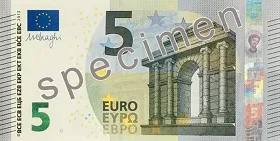 | 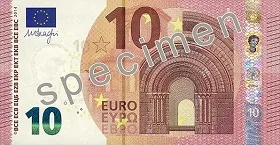 |
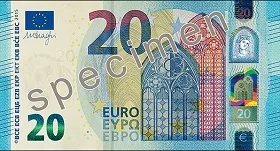 | 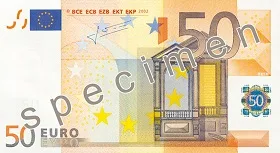 |
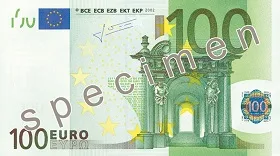 | 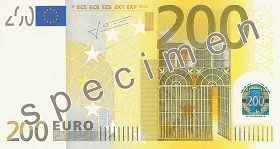 |
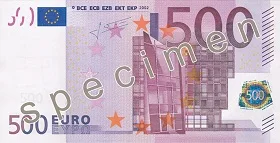 |
There’s no limit to the amount of cash you can bring with you to Spain. However, you’ll need to make a declaration at customs if you’re travelling with more than €10,000 cash (this includes traveller’s cheques). You have a number of options for picking up euros in the UK. Your bank can sell you euros for a competitive rate; however, you will be charged a commission for the service.
Providers such as the Post Office also sell you euros – you can order online and collect your cash from a branch near you before you leave. There’s no commission and they offer a reasonably competitive rate compared with many banks. For example, buying £500 worth of euros from the Post Office’s online Travel Money shop gives you €570 compared with €570.5 from Travelex (rates correct as of March 2024).
If you have foreign cash to change you will be overwhelmed with choice in Barcelona and Madrid. Exchange offices away from tourist attractions and banks will have better exchange rates. If you want to get the most competitive exchange rate, don’t get money changed at the airport.
You will be able to find ATMs in all Spanish towns and cities, petrol stations, shopping centres and bus and train stations. Bank-affiliated ATMs generally won’t charge you for usage except for Catalunya Caixa Bank, which will charge a couple of euros. Most ATMs, and almost all in larger towns and cities, will have an English option.
Back to topMerrymaking in Barcelona and Madrid
Michael visited Barcelona and Madrid on his way to Lisbon from Paris. Barcelona was his first stop in Spain, and visiting the Sagrada Familia was number 1 on his to-do list. All up, Michael spent 2 weeks in Spain: 1 week in Barcelona and 1 week in Madrid. He travelled on the Eurostar, which was a little expensive, but convenient and a great way to see the European countryside.
What cards did you take?
Michael says he took 2 debit accounts and a credit card to Spain.
Why did you take these cards?
Michael used his Citibank card as a travel card. It was free to open and cost nothing to keep so he wasn’t concerned if he didn’t use it once he got back home. He transferred money from his original account to his Citibank account and then used the Citibank Plus to withdraw from ATMs. Many bank ATMs throughout Europe do not charge local operator fees. His Citibank card doesn’t charge for international ATM withdrawals or for currency conversion so he was getting a pretty good deal each time he took out cash. He also used his Citibank Plus card to make over-the-counter purchases where he could to avoid the 3% fee for currency conversion. He used his credit card to pay for flights and secured complimentary international travel insurance.
Where could you use your cards?
Michael says he used his card more than cash in Madrid; there were lots of places where he could use his Mastercard and Visa cards. He says minimum transaction amounts were a problem; for example, he had to buy 3 or 4 packs of cigarettes at a time to get over the €10–€20 minimum transaction amount. There is a very low or minimum limit for card payments at supermarket chains such as Mercadona and Carrefour.
Did you use ATMs?
Michael says he made withdrawals from ATMs with an affiliation to his banks: Citibank, Barclays Bank and Deutsche Bank. He didn’t have to go far to find one of these machines in Madrid.
What tips do you have for using travel money in Spain?
The Madrid tourist card was offered to Michael but he turned it down. This gives you free entry to museums, free guide books and access to guided tours. Michael says this is only a good idea if you plan on spending a couple of days filled to the brim with culture spotting. There’s a saving on museum entry fees of approximately €10 but prices for the card start at €50 for a 1-day pass. Michael also says watch out for the IVA tax, which isn’t included in some bills and can be as high as 21%.
A combination of travel money products is the best approach to funding your trip to Spain. Use a debit card or a travel card to withdraw cash from ATMs and to make over-the-counter purchases when available, and use a credit card for emergencies and big ticket purchases. Credit cards offer up to 55 days interest free on purchases if you pay your account by the statement due date, and there are cards which provide complimentary insurance to protect important purchases against damage and loss.
By spreading your travel money across a couple of accounts, you won’t be caught without cash if a card goes missing and you can take advantage of money-saving travel perks. Travellers to Spain may be surprised at how easy it is to get by without spending a fortune. With a few travel money tricks up your sleeve, it’s easy to sample all of the joys of Spain, from flamenco to Dalí.
Weighing up the pros and cons of opening an offshore bank account.
thinkmoney’s current account options are quite limited in terms of features and the monthly fees are quite high for the features that are on offer.
If you regularly use airport lounges, a bank account that includes airport lounge access could be worth considering.
Find out more about the American banks operating in the UK.
We explain everything from registering and funding your business to employment and business law.
What are your chances of winning the monthly prize draw?
We’ve compiled a list of banks and apps that pay refer-a-friend bonuses, so you can earn some money for referring your friends.
Use our side hustle tax calculator to estimate how much income tax and National Insurance you might owe on your side hustle earnings.
Is this cashback scheme from Santander any good?
Ways to boost your income with just an internet connection, smartphone or laptop.